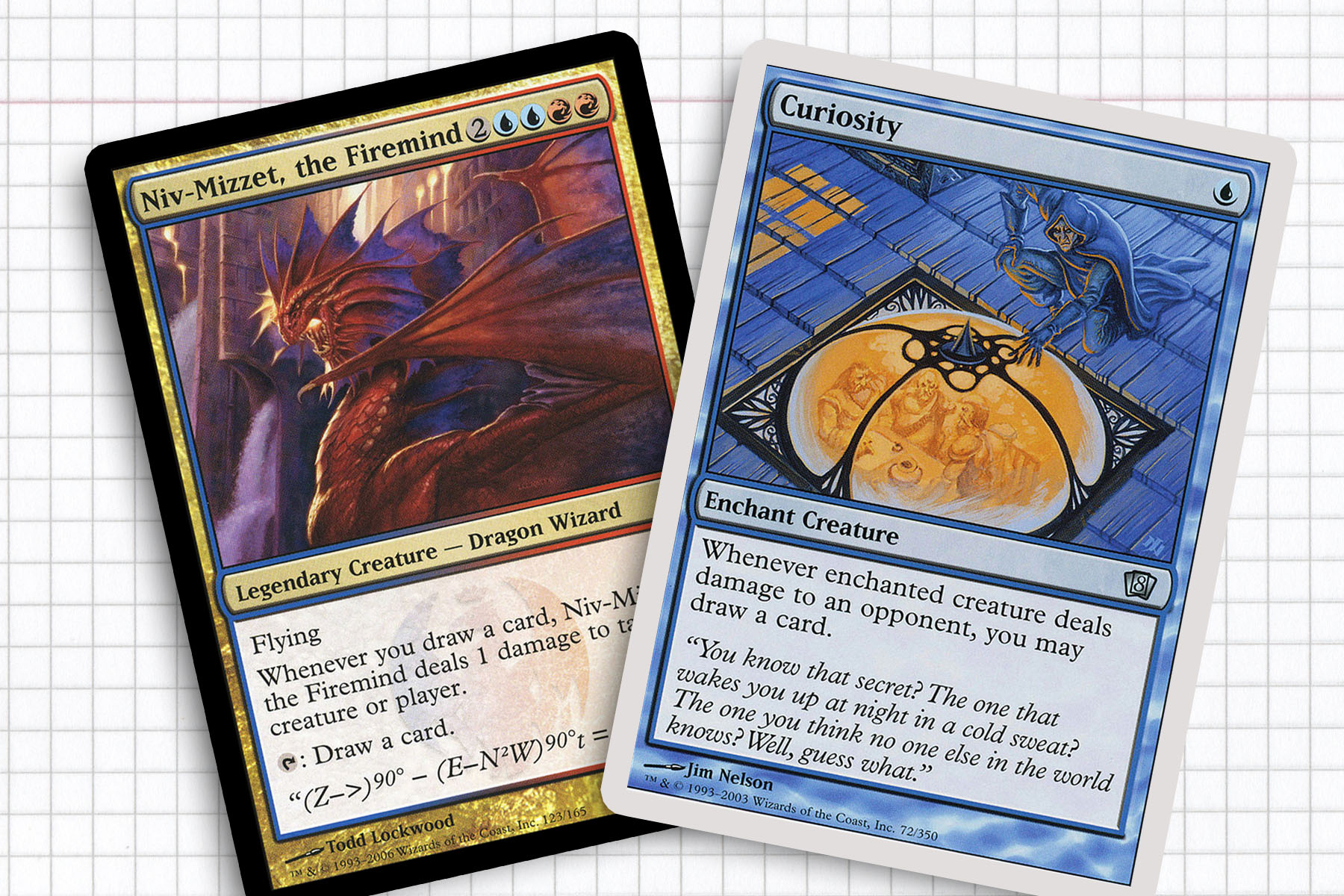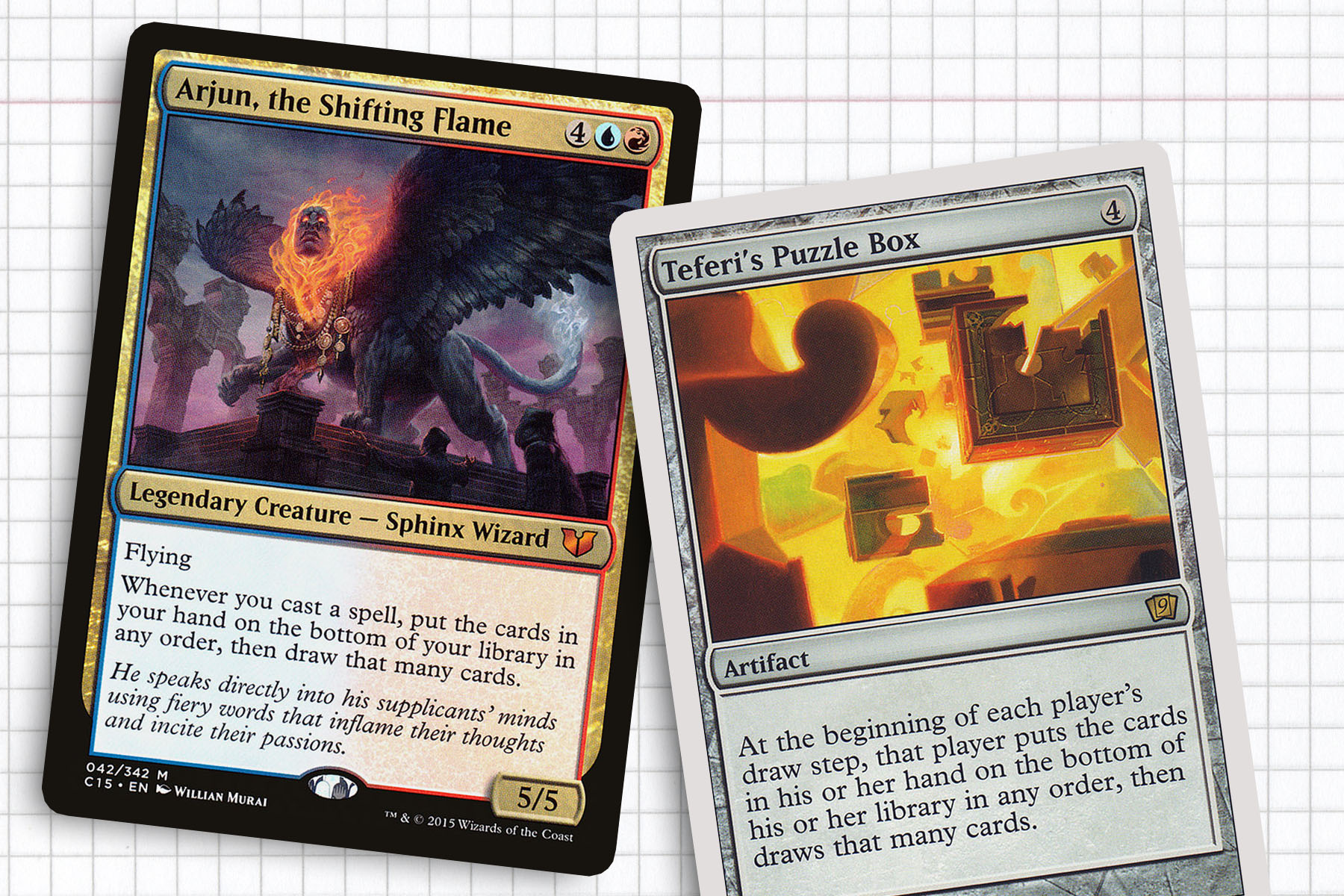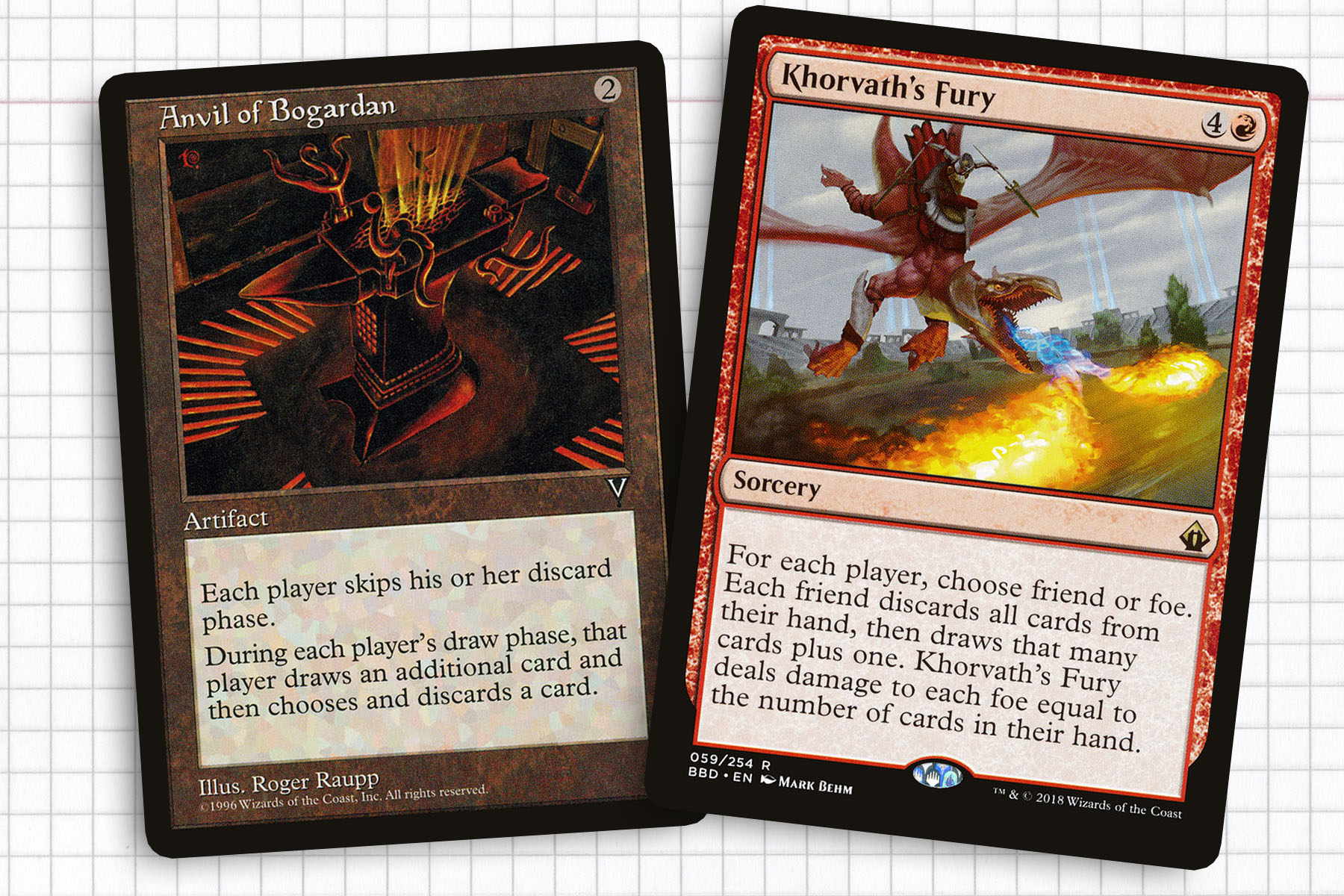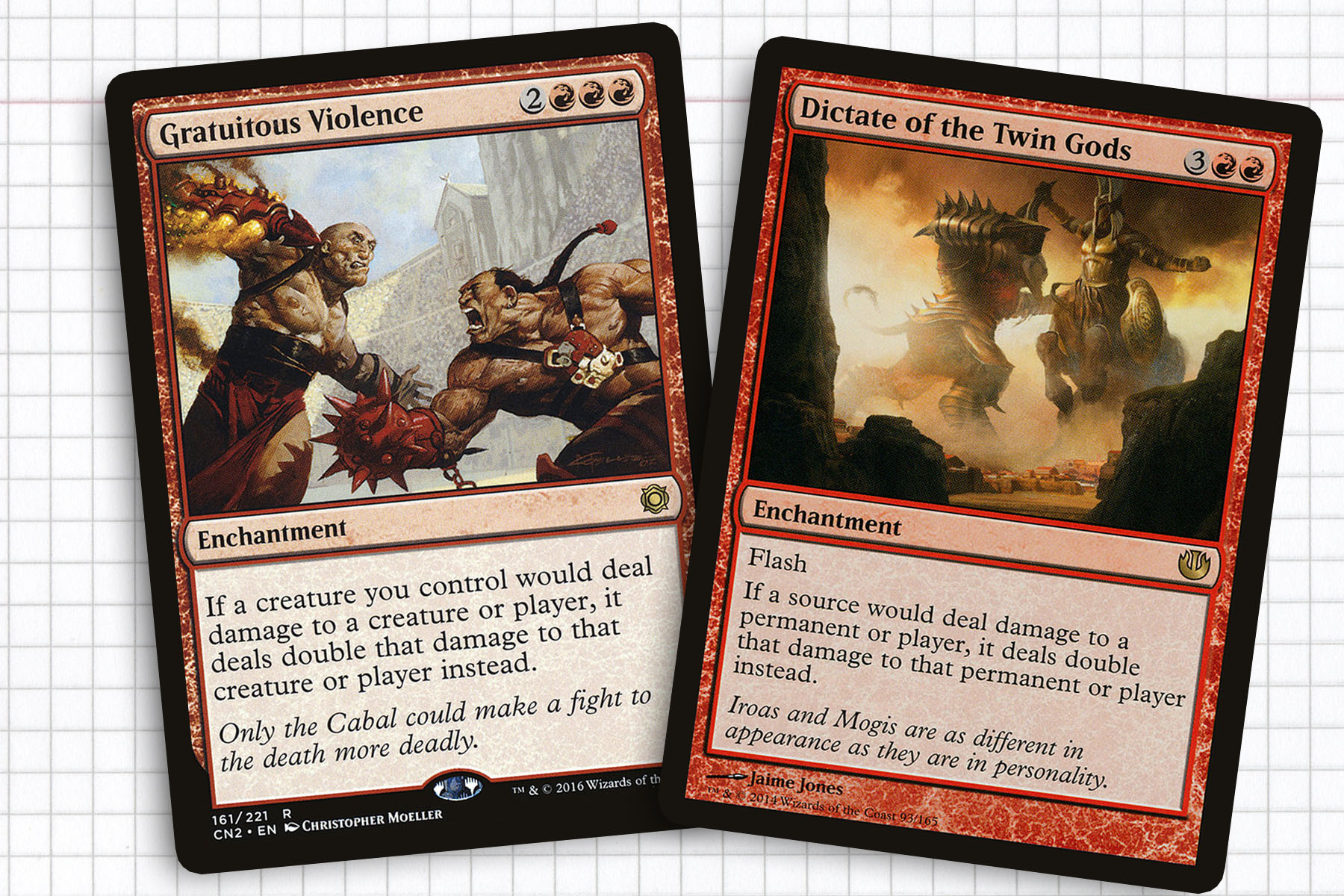Here we are at the end of the year, and I feel like I never addressed the release of Guilds of Ravnica. Like many, Ravnica holds a special place in my heart. A plane of huge popularity during my early years with the game and the source of a lot of bonding with my group of friends that I had met just prior to Ravnica: City of Guilds’ release. So for the month of December, I would like to do three entries on each of the trips to Ravnica, starting with today’s entry on Niv-Mizzet, the Firemind representing the original Ravnica, and continuing next week with Return to Ravnica block and the week following covering Guilds of Ravnica.
I chose to cover Niv-Mizzet because it is a character immediately linked to Ravnica as a plane for me, but is a deck I have never put much thought into building around, even as a 60-card casual deck. The idea is simple: draw cards, deliver damage, and stay alive. While this deck is very linear, I like the idea of having something akin to Nekusar, the Mindrazer without being as obnoxious.

The Curious Case of Niv-Mizzet
To many, including myself, Niv-Mizzet might be the most iconic character from the plane of Ravnica. Making an appearance in every block as the parun of the Izzet League, Niv is a millennia-old Dragon who is incredibly smart and reasonably suspicious that extraplanar travel is a thing people other than himself can do. At the time of his printing in Guildpact, I had never really made a connection with the Red/Blue pairing and was most excited for the White/Black Orzhov before we had seen any of the cards. But playing against an empowered Izzet deck changed my perceptions.
I think much of what makes the character so popular is tied to the casual interaction between Niv-Mizzet, the Firemind and Curiosity, which created a combo that could win on the spot. While it was a cheap combo to fight against, at that price of seven mana and the requirement of needing to untap with Niv in play, it was a level up moment for me. Before that I had never seen such a streamlined combo used against me and helped me to understand the pacing of the Magic group I had entered just a few months earlier. At first as I was outlining this deck I didn’t want to put Curiosity in, because I just don’t want to win that way as it has been done before. But Commander can be a very fickle format.
When most people reveal a general that’s problematic or known very well for a specific interaction within the metagame, people are highly likely to aim their crosshairs at that general. As such, even if this deck does not plan to win with Curiosity, I believe it needs to be in the deck because you’re just never going to convince anybody that it’s not in there. It’s one card that can be a silver bullet if the game calls for it. Just don’t try to take everyone out on your own.

Conservation of Resources
Because so much of the path to victory is going to be dependent on drawing cards to fuel Niv, it’s important to have some kind of plan to prevent decking yourself. The three big pillars of conserving cards in deck for me have to be Arjun, the Shifting Flame, Teferi’s Puzzle Box, and Mindmoil—they draw us cards but curtail massive discarding. These cards also open up the possibilities for a secondary route to victory that I feel is often overlooked when this deck is in the discussion: milling.
From the Comprehensive Rules (Guilds of Ravnica (October 5, 2018))
104.3c If a player is required to draw more cards than are left in their library, they draw the remaining cards and then lose the game the next time a player would receive priority. (This is a state-based action. See rule 704.)
While Niv can very easily string together the spells needed to damage at least one player out of the game, that card draw can also be used to mill another play or two out of game as well. This is a strategy I have personally used with Arjun, the Shifting Flame; but in that context, I was looking to mill each and every player out of game, which missed its mark far often than hit. The hybrid route could be far more successful, as long as you know who will benefit the least from a tall graveyard and who will be best defeated by damage. The core enchantments for the strategy within this deck being Jace’s Erasure, Psychic Corrosion, and Sphinx’s Tutelage, with the Tutelage often being the most important of the three.

A Live Draw
Drawing cards is the lifeblood of the color blue, so deciding which spells to play is not as much looking for viable options as much as looking for the best options. For most decks, the ability to get a short burst of card draw is adequate. Here we want either sustainable card draw that can be reused or the possibility of card draw greater than the mana invested. Curious Obsession is the less powerful Curiosity option doing a fine impression. Blue Sun’s Zenith is a card that does double duty of allowing us to target any player in case we want to win through damage or mill, while also going back into our deck to cast again later.
Anvil of Bogardan and Font of Mythos both come to mind as ways to increase the amount of cards drawn, but also may distract other players through group hug. Sarkhan, Fireblood is a format underdog that will not only supply card draw, but can help to cast our general a few turns early. But I think Dragon Mage and Khorvath’s Fury are two of the best draw spells to disrupt other players by attacking their hands and/or dealing swaths of damage.

Double Double
Having watched this deck in the past, it goes without saying that the game plan can be extremely fragile. So I see no reason to not take advantage of red’s ability to double damage. In the case of Furnace of Rath, we’re putting ourselves at a disadvantage if we can’t close out the game faster than somebody who might be swinging with creatures. That’s why Dictate of the Twin Gods or our own private Gratuitous Violence can be very helpful because we will get the most benefit out of them. I also would like to test out The Flame of Keld for its one shot effect to triple the Niv damage and possibly close out a game.
Additionally, we can look to double our card draw, with Thought Reflection and Alhammarret’s Archive being the best options that come to mind. But simply doubling their damage or our card draw it’s not our only options. We can bulk up the value of our color identity by using spells like Fork and Reverberate. In many decks I’ve dreamed of the time when Twincast is the right choice—often a spell like that is just a convoluted dream that’s never going to happen. But since we’ll be targeting our own spells, it will have a very specific purpose that it can help to multiply our cards drawn.
At the end of the day the strongest aspect of this deck for me is its simplicity. A newer player coming to the format should be able to look at this archetype, know exactly what to do, and gauge if it fits their tastes. While I am not often in favor of linear generals, they have value and sometimes just being able to turn off your brain to play a linear deck can be very relaxing. Join me next week when I will be outlining a deck with a general coming out of Return to Ravnica that should require an awful lot of brainpower to pilot.
Ryan Sainio is a Graphic Designer who writes about EDH, the EDH community, and streams on Twitch in his down time. He has been playing Magic: The Gathering since 7th Edition in 2002 and values flavorful and fun gameplay over competitively optimized decks. Join him for a stream at twitch.tv/hipstersainio on Tuesday nights.

